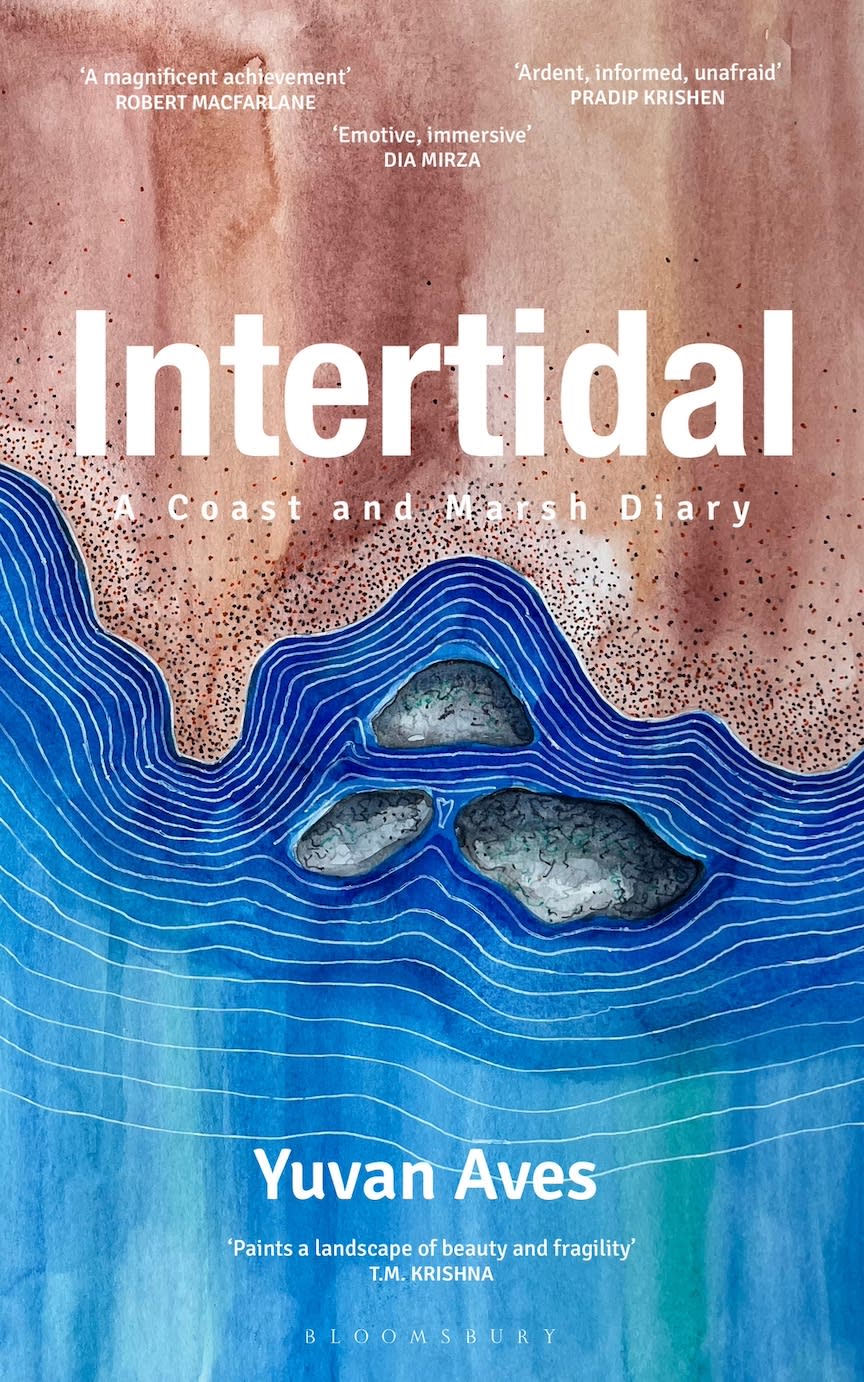 Listen to this article
•
15:34 min
Listen to this article
•
15:34 min
Urur Kuppam Beach | 22 January 2021
Belt of Venus—
a hawkmoth flits
from headlight to headlight.
A new season begins for life on the coast. The first confident south wind blows—locally called kacchan kaathu—and the longshore current has reversed directions possibly till next monsoon. Longshore currents are those which flow like rivers near and along the shoreline. The berm of Urur Kuppam Beach smoothly segues into water in most places like a gentle ramp. Anchovies and silver biddies swim right at the waves, and one can see the glint of their silver bodies as the water curls. The intertidal zone is packed with ghost-crab homes, and there is a heap and collage of shells deposited near the estuary. Today many crabs have pushed out large mounds of sand, like they are shutting off their burrows with a massive lid. From what? Cold winds or mist? Are they all together doing some home remodelling? Olive ridley turtles have begun arriving to nest and their numbers ought to increase in the weeks to come. A ridley’s hollow-eyed carcass lies at the Urur dockyard, shell cracked by impact and beak buried in sand. There are ghost-crab burrows all along its rotting flanks, its skin punctured and carved out at many spots by their scavenging. May less of them be struck by trawlers and get caught in ghost nets this year.
Goose barnacles grip almost everything which once floated and has been cast ashore this week. It seems that the ocean surface has a vast variety of footwear. Alcohol bottles have goose barnacles along their curves, like the scales on the back of a stegosaurus. Barnacle growth and density indicate how long they’ve been at sea. In May 2012 a man died for reasons unknown in the Tyrrhenian Sea, then floated out for a period of time, and later was washed ashore one of the beaches of Calabria in western Italy. Possibly for the first time, a forensic team used the deposition and growth rate of goose barnacles attached to his shoes and clothes to ascertain that he had been dead and floating for over three months. It would be interesting to apply the same forensics to the trash on Urur Kuppam Beach and its warmer tropical waters. The findings may go something like this: Bata sandals—three weeks, Coca-Cola bottle—five weeks, milk packet—one week, bottom of refrigerator—eleven weeks, and so on.
Neetil is the word Chennai fisherfolk use for the long line in the sea which separates the murky waters of the wave-laden nearshore and the deep blue calmer offshore. It’s a distinct meeting of colour fronts—which they call edappu—one clearly sees from the beach. Usually when the edappu is near the beach the weather is likely to be calm or sunny. But if it is far away or not to be seen, there is always overcast weather and a rough ocean. Travel through the ocean and one crosses many such neetils as the water’s nature keeps shifting from changing and meeting currents, winds and bathymetries.
The mind mirrors the ocean.

Before I sit to write in the mornings I practise watching my breath—drawn from two-thirds ocean and one-third land—and the waves of turbidity and clarity which wash over me as I pay attention. As you practise attention, right at the beginning feelings and voices and images of one’s immediate circumstances ebb and tide. Then maybe ten, twenty, thirty minutes later you cross a neetil. The mind becomes quieter, emotions emerge from deep within, sometimes raw and primal images arise that are outside logic. Light dances, long-ago memories may bubble up, the backbone may sway back and forth. Somewhere about here there is another neetil, a little elusive if you go searching for it. When you cross it you find your confined identities peel away. Ear canals may begin to hum. Eddies of thought only occasionally cross the expanse. The perceived boundaries between air and mind, land and body, inner and outer, self and other, may start becoming indiscernible. I try to enter this space before I write. It helps me open up and see the co-authorship of everything written together by sea, tree, insect, sun, barnacle and myself. A different kind of transrational, perceptual process operates. Anthropologist Tara Lumpkin’s work shows how we can and we need to explore different layers of our consciousness to learn to coexist with other species and the rest of nature.7 She has written about how most indigenous communities are polyphasic—they live in and value the importance of different states of perception beyond just the normal waking state. She calls this perceptual diversity. Like the ocean, our neetils are many.
The red bundles of tentacles—cirri—of the goose barnacles have shot out of their shell plates. They are unreeled when a wave crashes and rolls in, even in those barnacles stuck on rubber slippers and bottles many feet away from the intertidal. Attached like stickle bricks upon each other, older ones at the bottom and young ones at the top, the barnacles are all listening deeply to the ocean through each other and the glass and plastic on the sand. They know very well the vibrations of a wave crashing forward or washing back, and their cirri came out just in time when the water is near and they could filter feed from it.
Falling tide …
the howl of wind
in the turtle’s skull.




